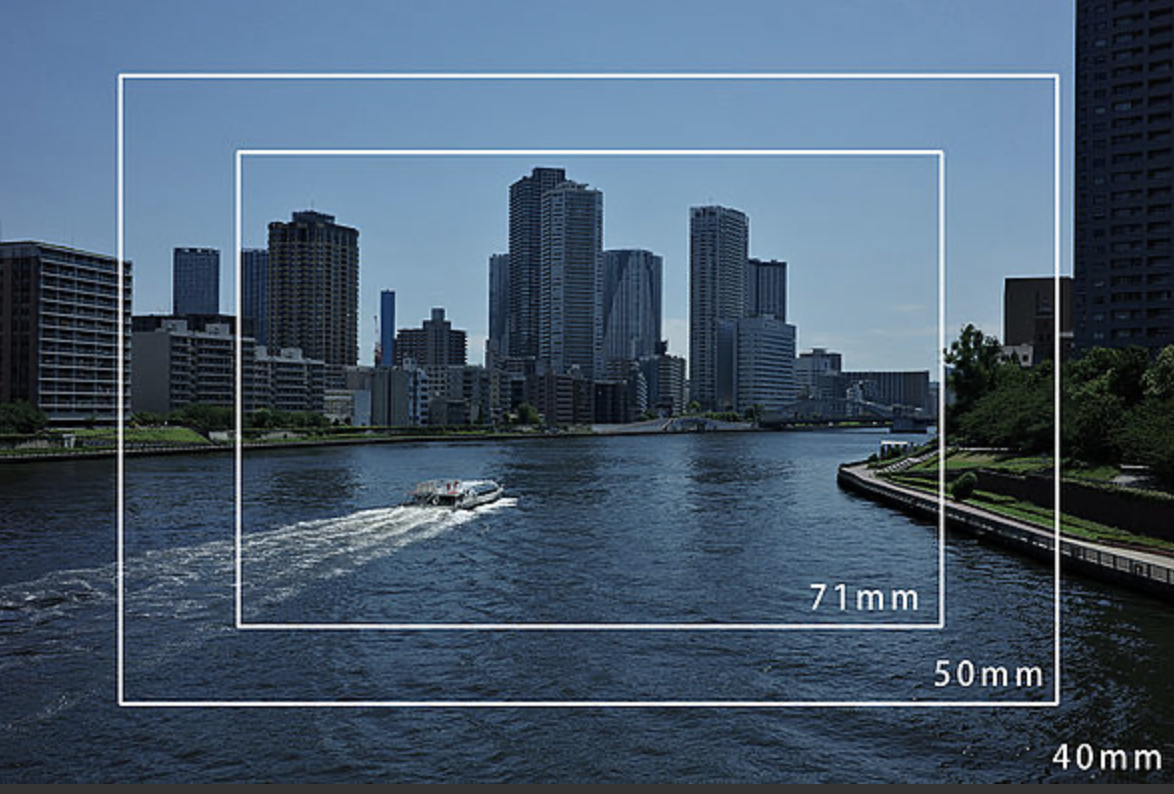The Ricoh GR, now in its third iteration, is something of a cult object among discerning photographers. Some enthusiasts claim that it is the best camera for street and general photography, and I have some sympathy with that view. It has its failings, mainly because of the rather fiddly controls and the lack of a built-in viewfinder, but in terms of performance, it punches well above its weight. It has even won plaudits for its 28mm focal length, which many now prefer for general photography. The wider-angle lens certainly hasn’t stopped people buying the Leica Q.

Now, while the 28mm GR III continues, the range is enhanced with a new 40mm version, the GR IIIx. It uses the same sensor but a completely redesigned lens. It comes with operational improvements, many of which will be ported to the GR III in the near future.
Crop feature
The GR IIIx features an al-new 26.1mm wide-angle lens that translates into a 39.15mm angle of view when used with the APS-C sensor. Whereas the GR III, with its 28mm-equivalent lens, offers 35mm and 50mm crop facilities, the new version provides 50mm and 71mm options.

While the GR III uses a slim optical system consisting of six elements in four groups, with a focal length of 18.3 mm (approx. 28 mm in 35 mm equivalent focal length) and a maximum aperture of f/2.8, the GR IIIx has a newly developed optical system consisting of seven elements in five groups.
High-refractive index low-dispersion glass lenses and aspherical high-precision moulded glass lenses are optimally placed in the lens construction according to each model’s optical system to suppress optical distortion and chromatic aberration to the absolute limit. The company says that this results in images that are sharp and clear across the entire frame even from the full aperture setting.
ISO 102400
A high-performance processor “Accelerator Unit” is adopted on GR III/GR IIIx as a means of support high image quality. The signal output by the image sensor is sent to the image processor after being optimally handled. This reduces noise, delivering “superb resolution and colour reproduction across the entire sensitivity range”. It also makes it possible to shoot at ISO 102400.
Camera shake is reduced for crisp images even when taking split-second snapshots. Shake Reduction(SR) is installed while making the body size of GR III/GR IIIx compact. It minimises the shake on three axes, including yaw, pitch and roll. Compensation effects deliver as many as four stops of shutter speed.
Both the GR III and GR IIIx are equipped with a high-resolution, wide dynamic range APS-C format CMOS image sensor (approx. 24.24 effective megapixels).
A high output motor is used to drive the lens barrel so that it quickly moves from a retracted position to the shooting position. Start-up time has been reduced to under one second from the moment the power button is pressed. The built-in lens is equipped with an automatic lens barrier to provide protection when retracted.
The camera features hybrid autofocus. Eight focus modes are available including Continuous AF for versatile shooting styles. The LCD monitor that supports touch operations is also adopted for direct control over the AF frame using touch and slide gestures. You can also focus (Touch AF) and shoot while moving the AF frame for quick shooting in any type of composition. Eye detection is also incorporated.
Full-press snap
The GR IIIx also features the high-speed shooting mode incorporated in the GR III. When the shutter button is pressed fully, the camera releases the shutter at the preset distance. This high-speed shooting functionality is unique to the GR, eliminating the focusing time lag when pressing the shutter button halfway so that you can instantly capture split-second moments. Full Press Snap also takes place by touching the LCD monitor.
The new “DOF Priority (Deep)” Program Line is perfect for shooting with pan focus. This is a feature that maintains priority for a closed aperture (GR III: f/8.0, GR IIIx: f/11) when shooting in the program mode. It deepens the depth of field and, when combined with the Snap setting of the focus mode, enables you to easily take pan-focus shots.

Other features include a macro mode, built-in ND filter, ultrasonic sensor cleaning, USB charging, a generous 2GB in-built memory and an “outdoor view” setting to optimise screen visibility whether in bright outdoor settings or in dark environments. The camera also offers in-camera RAW processing.
The plain-Jane, no-frills body of both the GR III and GR IIIx is constructed from magnesium alloy. While there is no in-built viewfinder, Ricoh offers the new GV3 40mm accessory optical viewfinder for the GR IIIx (the GR III has a similar 28mm device). The viewfinder is expensive at £300 and represents no less than a third of the £900 purchase price of the IIIx. A new 75mm conversion lens is also available for the IIIx at a cost of £250.
Find full details and specifications here
Read more on the Ricoh GR here
A cup of coffee works wonders in supporting Macfilos
Did you know that Macfilos is run by a dedicated team of volunteers? We rely on donations to help pay our running costs. And even the cost of a cup of coffee will do wonders for our energy levels.


I just picked up a GR II to slip into my pocket when out and about. What a fabulous camera. I love the handling; the controls are simple and intuitive. It’s well built and cost just £200. I don’t miss the EVF as much as I thought I would (something to do with this style of camera and its intended uses). I’m tempted by this new 40mm equivalent version. 40mm is a great focal length. And with IBIS too…
Always wanted a digital version of my Olympus trip, so looks like I’m buying. Quite excited actually
You *know* I have one on order… I have waited 25 years for this. From the film GR1 to the GRIII I have always had one of the little Ricohs in my pocket or a corner of my bag, even though 28mm is a bit on the wide side for my tastes. The 40mm equivalent lens is perfect for me and I shall use the newcomer alongside my existing GRIII as a potent and capable street and travel setup.
Good to hear from you again, Bill. I remember your enthusiasm for the GR. My GR III died on ne two years ago (no power) and I couldn’t get it repaired at a cost that wouldn’t have been more than it was worth at the time. So I didn’t replace it. I am now tempted again, but can’t decide if I’d be happy with 40mm. Decisions.
I would buy this if it had a pop up viewfinder- does not need to be evf. No built – in viewfinder is a deal breaker for me. I tried an earlier GR version but couldn’t get on with no viewfinder. Also, a camera is a lot more stable pressed against my face.
It is a lovely option for those who do not need a viewfinder.
In fairness, the little Ricoh optical viewfinder is very neat and unobtrusive but in general I agree with your view on this. It’s one of the reasons the Fuji X100 series has been so popular, even though it is bigger and heavier than the Ricoh. It also looks “more professional” and this fools a lot of people when they look at the Fuji and Ricoh side by side.
Interesting development, and I saw Kai’s video on this – I see this as the innovation that Leica should have done with the CL, by introducing a fixed lens variation.
I hope Jean has his wallet well locked away..😂Sorry, couldnt resist.
Ha, ha, ha !!! I already got 4 Ricohs at home and like the old GRD4 paired with the X2 so much that I’m past GAS. Might go for a used 28mm GXR used model to complement the 50mm macro module.
Enjoy Sunday
Yes!!!